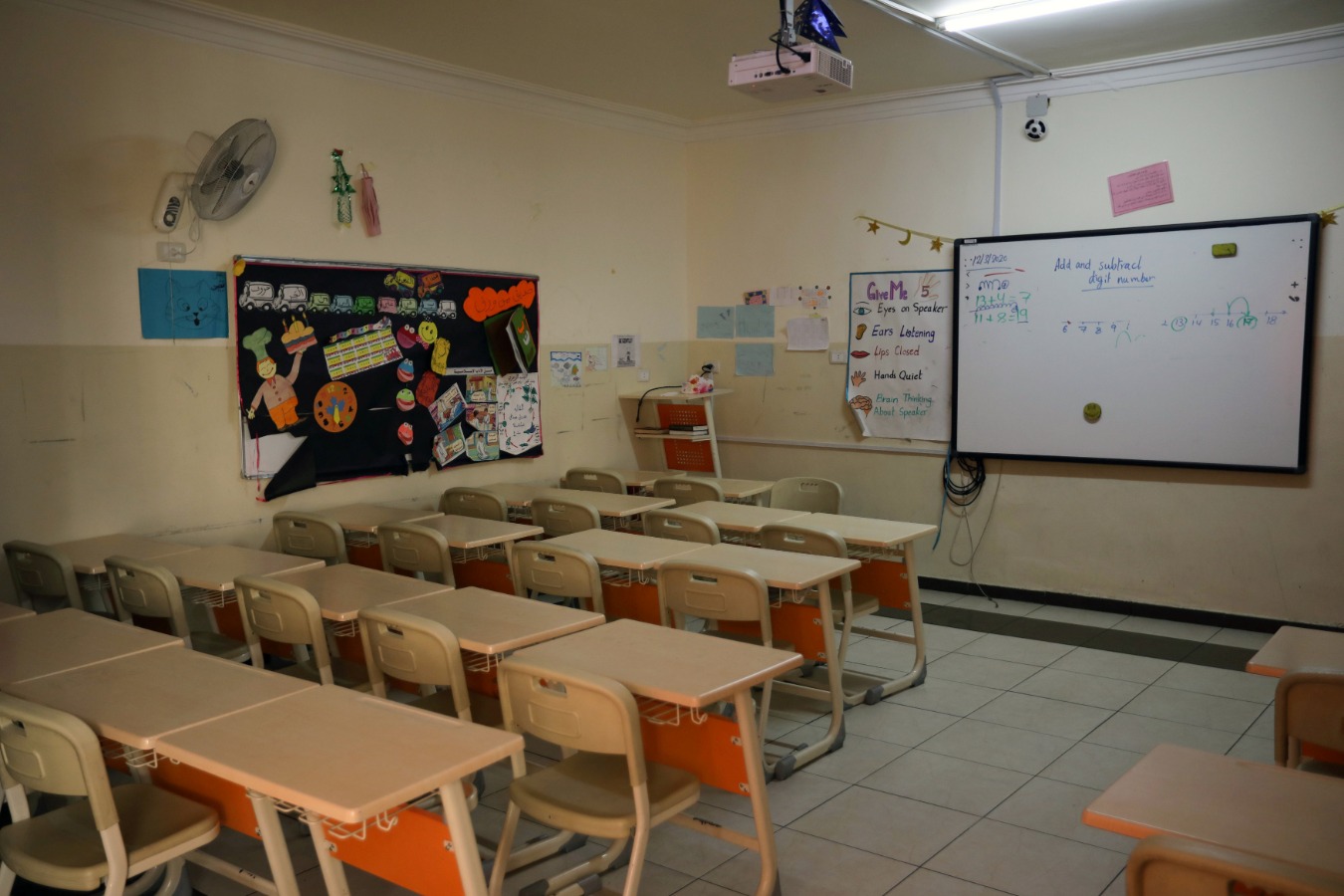This post is the first in a 3-part series on school reopening for Arizona students with disabilities during COVID-19.
Back in March 2020, Arizona Governor Doug Ducey and Superintendent of Public Instruction Kathy Hoffman jointly announced that schools would be closing for in-person learning through the end of the 2019-2020 school year. During that final quarter of the school year, schools were required to provide learning opportunities to all students, including students with disabilities. For more information on what schools were required to do for students with disabilities during the spring 2020 school closure, take a look at this ACDL frequently asked questions resource.
Since that time, the Governor’s office has issued several executive orders that have impacted the provision of services to children with disabilities, such as an expansion of insurance coverage for telehealth services, instituting enhanced safety measures in care facilities and group homes, and providing flexibility for child care centers.
In this blog post, we will be providing an overview of the most recent executive orders pertaining to school reopening and will be highlighting some key points. Please take the time to read the executive orders in their entirety and pursue additional interpretation of the orders by visiting the Arizona Department of Education’s website or contacting the Department’s Exceptional Student Services team.
Be aware that new executive orders may be issued at any time, impacting the applicability of the information in this blog post.
- When will school start?
On July 23, 2020, the Governor issued Executive Order 2020-51: Arizona Open for Learning. This executive order states that schools are required to begin school in a distance-learning format on the date originally designated in their academic calendar, and can begin offering in-person learning on or after August 17, 2020, at the discretion of each school district’s leadership. The order encourages schools to consider various public health indicators when deciding when to begin offering in-person instruction.
In other words, distance-learning will start on the first day of school indicated by each school district or charter’s instructional calendar. You can find out when this day is for your child’s school by checking the school website, social media, or calling the school’s front office. Until at least August 17th, distance-learning will be the only option available for students.
Each school district or charter will decide when to start offering in-person learning. Schools are encouraged but not required to consider public health data when deciding when to begin in-person learning. Most school districts have developed a reopening plan that will give parents different options to choose from, including distance-learning, in-person learning, or a hybrid option. Most schools will start the school year providing remote learning only and will begin offering in-person and hybrid learning options later in the school year, when it is considered safe to do so.
- What are “On-Site Learning Opportunities”?
Both Executive Order 2020-51 and a previous order, Executive Order 2020-41, include a requirement for schools to provide “on-site learning opportunities and support services for students who need a place to go during the day.” After August 17, 2020, schools that are not offering in-person school must begin to offer in-person “learning opportunities and support services” to students who need a place to go during the day.
This will not be the same as in-person school—rather, it means that schools must provide a physical place where students can engage in remote learning if they are not able to be at home. For example, students who don’t have internet at home, students who are in foster care, or students who are homeless may need a brick-and-mortar place to go to engage in remote learning. Schools will be required to provide those spaces. While schools will be providing a physical space and adult supervision, there is no requirement that schools provide in-person education from a teacher.
However, the Arizona Department of Education has interpreted the requirement for on-site learning opportunities to mean that schools must develop a way to deliver in-person services to students with disabilities who cannot effectively be provided a free appropriate public education in a virtual/distance learning environment. Starting August 17th, if a student with an individualized education program (IEP) needs in-person services, the school must begin providing those in-person services.
The Arizona Department of Education also states that only those services that a child cannot effectively be provided in a distance-learning setting are required to be provided in an in-person environment. Under the Department’s view, it is possible that a student with an IEP will be learning in both virtual and in-person environments, depending on the needs of the student and the services outlined in the IEP.
Example: If a student with an IEP is able to participate in specially designed reading instruction virtually by engaging in small-group Zoom sessions with the special education teacher, then those services can be effectively provided virtually and do not need to be offered in-person. However, if that same student also receives occupational therapy services that cannot be effectively provided through a virtual medium because the services involve hand-over-hand therapy, the school will need to make those services available in-person for that student starting August 17th. This student’s weekly schedule might include virtual learning from home on Mondays, Tuesdays, Wednesday mornings, Thursdays, and Fridays, and in-person learning at a school site on Wednesday afternoons, when the student is provided in-person occupational therapy.
This is just one example of how on-site learning might impact a student with a disability. Decisions about on-site learning should be discussed with your child’s school administrators and IEP team.
The on-site learning opportunities do not necessarily need to take place in a school-owned building. Schools are able to partner with community organizations, such as Boys and Girls Clubs or the YMCA, to provide the sites for these students.
On-site learning opportunities must be made available to any student who needs them, and cannot be limited or capped. Schools may adopt policies to make sure students are able to maintain appropriate social distancing while using on-site learning opportunities, but the policies may not limit the availability of free on-site learning.
Transportation to and from the on-site learning opportunity is not required, however schools are strongly advised to make transportation available to students who need it.
You can find guidance from the Arizona Department of Education about these on-site learning opportunities here.
- What are Distance Learning Plans?
All school districts and charter networks are required to develop and submit a “distance learning plan” to the Arizona Department of Education. These plans should include information about how schools will fulfill their responsibilities like taking attendance, ensuring students have access to technology, and serving students with disabilities during distance learning.
Here is a distance learning plan template that the Arizona Department of Education has provided to all districts and charters. Schools are required to post their completed distance learning plans on their websites by the first day of school. Look on your child’s school website to see if the plan is available, and if it is not, reach out to district or charter administration to ask to see a copy of the plan.
- Are schools required to have mask policies?
All schools are required to have a face covering policy that will apply to staff and students over the age of five. These policies must include exceptions that are consistent with guidance from the Centers for Disease Control and Prevention. Specifically, cloth face coverings should not be worn by children under the age of 2 or anyone who has trouble breathing, is unconscious, incapacitated, or otherwise unable to remove the mask without assistance.
Find out about your child’s school’s mask policy before you make a decision about which learning model to choose for your child once in-person learning becomes an option. Again, look on the school website or contact a school administrator to learn more.
- Can developmental preschools provide services?
Developmental preschools, which provide services to preschool children with disabilities, are allowed to provide in-person services immediately. Preschool children with disabilities who require in-person support must be provided specially designed instruction as soon as the child has entered school. Services must be provided in accordance with public health recommendations.
DISCLAIMER:
THIS BLOG/WEB SITE IS MADE AVAILABLE BY ACDL AND ITS LEGAL STAFF FOR EDUCATIONAL PURPOSES TO GIVE YOU GENERAL INFORMATION AND A GENERAL UNDERSTANDING OF THE LAW, NOT TO PROVIDE SPECIFIC LEGAL ADVICE. BY USING THIS BLOG SITE, YOU UNDERSTAND THAT THERE IS NO ATTORNEY-CLIENT RELATIONSHIP BETWEEN YOU AND ACDL. THE GENERAL INFORMATION ON THE BLOG/WEBSITE SHOULD NOT BE USED AS A SUBSTITUTE FOR COMPETENT LEGAL ADVICE FROM A LICENSED PROFESSIONAL ATTORNEY IN YOUR STATE. COMMENTING ON A POST DOES NOT CONSTITUTE AN INTAKE WITH ACDL. IF YOU WOULD LIKE TO REQUEST LEGAL ADVICE OR SERVICES CLICK HERE FOR INFORMATION ABOUT OUR INTAKE STEPS.


0 Comments